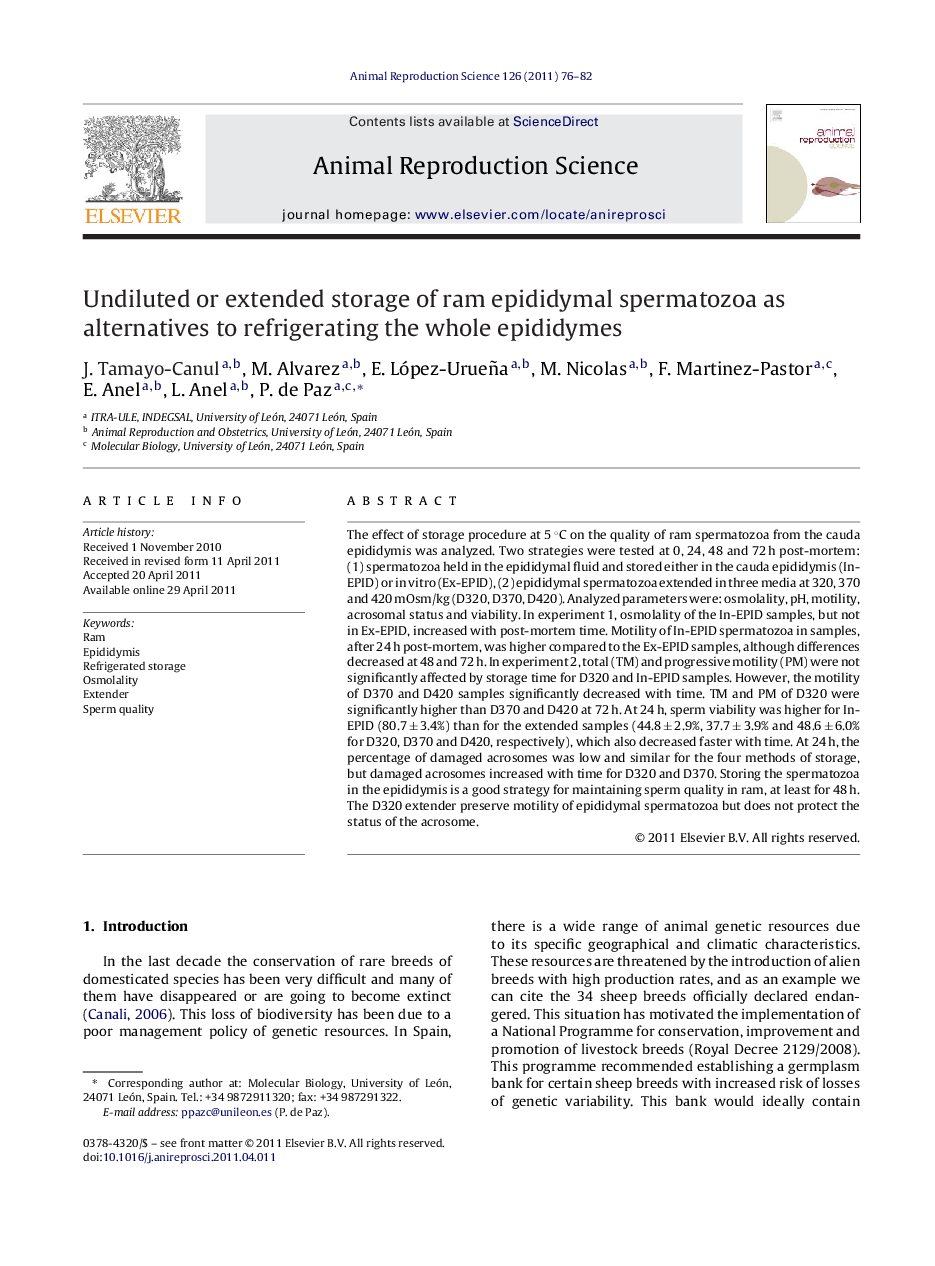| کد مقاله | کد نشریه | سال انتشار | مقاله انگلیسی | نسخه تمام متن |
|---|---|---|---|---|
| 2073417 | 1544772 | 2011 | 7 صفحه PDF | دانلود رایگان |

The effect of storage procedure at 5 °C on the quality of ram spermatozoa from the cauda epididymis was analyzed. Two strategies were tested at 0, 24, 48 and 72 h post-mortem: (1) spermatozoa held in the epididymal fluid and stored either in the cauda epididymis (In-EPID) or in vitro (Ex-EPID), (2) epididymal spermatozoa extended in three media at 320, 370 and 420 mOsm/kg (D320, D370, D420). Analyzed parameters were: osmolality, pH, motility, acrosomal status and viability. In experiment 1, osmolality of the In-EPID samples, but not in Ex-EPID, increased with post-mortem time. Motility of In-EPID spermatozoa in samples, after 24 h post-mortem, was higher compared to the Ex-EPID samples, although differences decreased at 48 and 72 h. In experiment 2, total (TM) and progressive motility (PM) were not significantly affected by storage time for D320 and In-EPID samples. However, the motility of D370 and D420 samples significantly decreased with time. TM and PM of D320 were significantly higher than D370 and D420 at 72 h. At 24 h, sperm viability was higher for In-EPID (80.7 ± 3.4%) than for the extended samples (44.8 ± 2.9%, 37.7 ± 3.9% and 48.6 ± 6.0% for D320, D370 and D420, respectively), which also decreased faster with time. At 24 h, the percentage of damaged acrosomes was low and similar for the four methods of storage, but damaged acrosomes increased with time for D320 and D370. Storing the spermatozoa in the epididymis is a good strategy for maintaining sperm quality in ram, at least for 48 h. The D320 extender preserve motility of epididymal spermatozoa but does not protect the status of the acrosome.
Journal: Animal Reproduction Science - Volume 126, Issues 1–2, June 2011, Pages 76–82